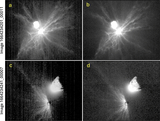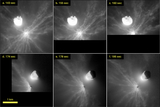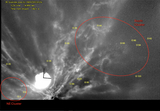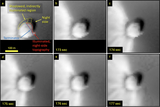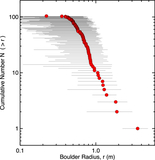Image Details
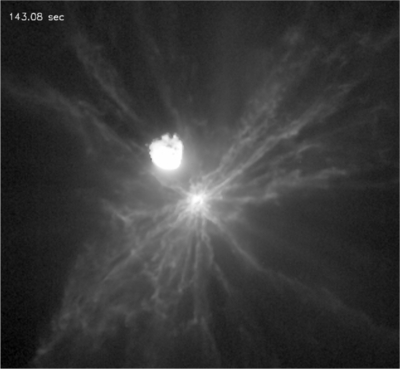
Caption: Figure 2.
Animated sequence of LUKE images showing the evolution of the ejecta morphology during the flyby. The sequence covers the period from 29 to 243 s after impact (times are shown in the upper left corner), with the initial face-on dust distribution transforming into a wedge shape as the spacecraft moves from inside to outside the dust cone around close approach. Images are centered on Dimorphos and have been scaled to a common spacecraft range, with a field of view spanning 7.80 km. The black sections of the images near C/A are regions that lie beyond the edges of the detector.
(An animation of this figure is available in the online article.)
(An animation of this figure is available.)
The video/animation of this figure is available in the online journal.
Copyright and Terms & Conditions
© 2025. The Author(s). Published by the American Astronomical Society.


